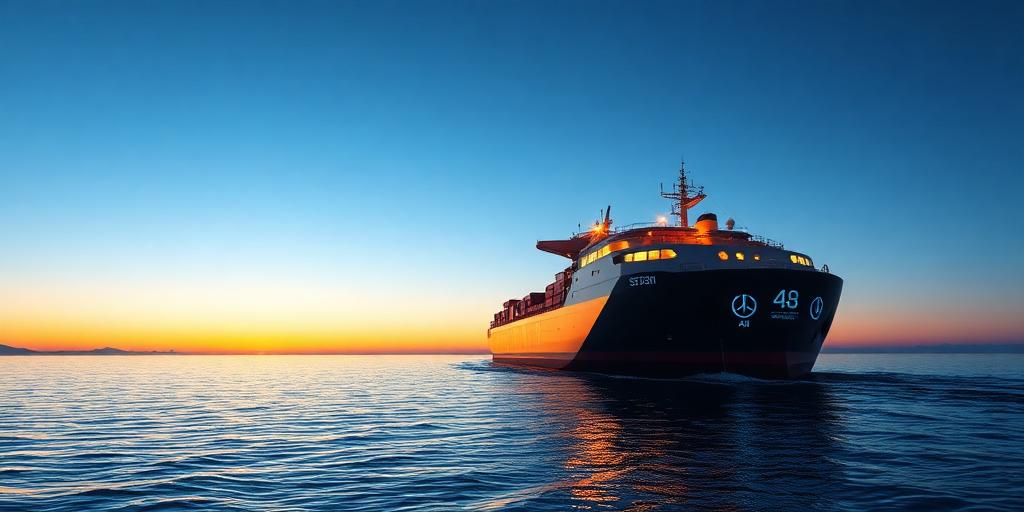The maritime industry, a cornerstone of global trade for centuries, is on the cusp of a profound transformation driven by the advent of autonomous ships. These self-navigating vessels, equipped with advanced artificial intelligence, sensor fusion, and sophisticated communication systems, are poised to redefine operational paradigms, enhance safety, and optimize logistics on an unprecedented scale. This revolution promises not merely incremental improvements but a fundamental shift in how goods are transported across the world's oceans.
The Dawn of Autonomous Maritime Technology
At its core, an autonomous ship leverages a complex interplay of technologies to operate independently. High-precision GPS, LiDAR, radar, and advanced cameras provide comprehensive situational awareness, feeding data to AI-driven navigation systems. These systems interpret the environment, detect obstacles, plan optimal routes, and execute maneuvers without direct human intervention. Furthermore, sophisticated communication links ensure data exchange with shore-based control centers, enabling remote monitoring and, when necessary, human oversight.
Long-tail keywords:
- impact of autonomous shipping technology
- benefits of self-navigating vessels
Key Advantages of Autonomous Shipping
The compelling arguments for adopting autonomous shipping technology are multifaceted and impactful:
Enhanced Safety and Reduced Risk
Human error accounts for a significant majority of maritime accidents. Autonomous systems, free from fatigue, distraction, or emotional bias, can maintain consistent vigilance and adhere strictly to navigation protocols, thereby drastically reducing the incidence of collisions, groundings, and other human-related incidents. This focus on precision directly translates to fewer casualties and less environmental damage from spills.
Operational Efficiency and Cost Reduction
By optimizing routes, maintaining consistent speeds, and reducing the need for extensive onboard crew, autonomous ships offer substantial operational savings. Fuel consumption can be minimized through precise navigation, and port turnaround times can be improved. Furthermore, the absence of a large crew significantly lowers personnel costs, which represent a considerable portion of shipping expenses. This directly contributes to the future of maritime logistics automation.
Environmental Benefits
Optimized navigation and propulsion management, guided by AI, can lead to reduced greenhouse gas emissions and improved fuel efficiency. The ability to react in real-time to weather patterns and sea conditions allows for more energy-efficient voyages, contributing positively to global sustainability goals.
Navigating the Challenges Ahead
While the potential of self-navigating vessels is immense, several critical challenges must be addressed for widespread adoption.
Regulatory Frameworks and International Law
Existing maritime regulations, such as the International Convention for the Safety of Life at Sea (SOLAS), are predicated on the presence of human crews. Developing new, harmonized international legal frameworks that account for autonomous operations, liability, and command responsibility is paramount. This will require significant collaboration among maritime nations and organizations.
Cybersecurity Threats
As ships become more connected and digitally dependent, they also become more vulnerable to cyberattacks. Protecting autonomous navigation systems, communication links, and data integrity from malicious actors is a critical security imperative to prevent hijacking, data manipulation, or system sabotage.
Ethical and Societal Implications
The displacement of human jobs in the maritime sector is a significant concern that requires proactive strategies for retraining and re-skilling the workforce. Additionally, ethical questions surrounding decision-making in autonomous systems during critical, unforeseen events must be thoroughly debated and resolved.
Long-tail keywords:
- challenges in autonomous vessel development
- AI in shipping and port operations
The Horizon: A Connected and Autonomous Future
Several pilot projects and commercial initiatives are already underway, demonstrating the viability of autonomous ship technology. From remote-controlled tugboats to fully autonomous cargo vessels navigating short sea routes, the industry is gradually moving towards greater autonomy. The ultimate vision includes highly integrated shipping ecosystems where AI in shipping and port operations work in concert, with autonomous vessels seamlessly interfacing with smart ports and automated logistics chains.
This transformative journey will necessitate continued investment in research and development, robust testing protocols, and a global commitment to establishing clear standards and regulations. The revolution of autonomous ships is not a distant fantasy but an evolving reality that promises to reshape global trade for generations to come, ushering in an era of unprecedented efficiency, safety, and sustainability in the maritime domain.









